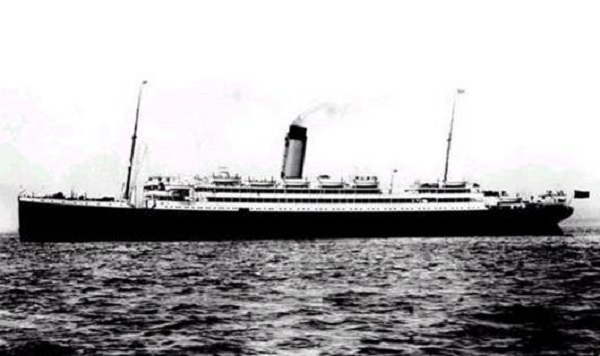Commemorative events will take place in Inishowen and Derry during the week to remember the tragic sinking of the HMS Laurentic.
The HMS Laurentic sank off the coast of Fanad Head when it was struck by a mine, leading to the loss of over 350 seamen.
In Inishowen a guided coach tour will leave the Shadows Hotel at 10am on the 26th of January.
A Wreath Laying ceremony will take place at St. Mary’s Cemetery in Cockhill on the 28th of January at 11am, with other one taking place at St. Mura’s Church of Ireland at 12:30pm in Fahan. Both cemeteries are where some of the crew were laid to rest.
These ceremonies will then be followed by a special reception on Saturday at 2pm Fort Dunree.
On the 29th of January, a commemorative flotilla will leave Buncrana to the site of the Laurentic wreckage.
In Derry, a new Laurentic exhibition will be launched on the 25th, and run for six months.
For details on more commemorative events you can visit the Ulster Canada Initiative’s Facebook page.
History
The HMS Laurentic was built by Harland and Woolf in Belfast; and was launched just months before the infamous Titanic from the same shipyard.
An interesting historical fact is that this boat is responsible for the capture of the notorious Dr. Crippen, a murderer who tried to flee to Canada on the Montrose.
When the Captain of the Montrose recognised Crippen and his partner as the wanted fugitives, Scotland Yard Chief Inspector Walter Dew was alerted.
Dew picked the HMS Laurentic to sail to Canada faster than the Montrose; despite the Montrose’s departure three days earlier. When the Montrose docked, Dr. Crippen was taken into custody and hanged for his crimes. Dr. Crippen is the first suspect to be captured with the aid of wireless telegraphy.
Lough Swilly
Carrying 43 tonnes of gold bullion to pay for vital war munitions, on the 23rd of January 1917 the HMS Laurentic began the long voyage from Liverpool to Nova Scotia, with Captain R.A. Norton at the helm.
Captain Norton had received an order to discharge five seamen in Buncrana. The crew landed in Buncrana and the men enjoyed a meal at the Lough Swilly Hotel before sailing out towards the North Atlantic Ocean on the 25th of January.
Conditions at sea were perilous that night. Snow and hail pummeled the decks, as gale force twelve winds battered the boat and made maneuvering extremely difficult.
As they passed Fanad Head, the ship struck a mine. The second mine they struck destroyed the engine room and generators. As the radio relied on electricity, no distress signal could be sent.
Men loaded into the lifeboats – no mean feat in complete darkness and gale force winds.
Before leaving the ship, Captain Norton checked that no man who survived the blasts were left behind before disembarking.
However, despite Captain Norton’s efforts, many of those on the lifeboats did not survive. Many had been fatally wounded already, with most dying from exposure during the night before their rescue the following day.
Of the 470 seamen who left Liverpool two days earlier; 350 lost their lives. Corpses washed ashore for many weeks after the sinking.
On the 31st of January 1917, 71 bodies were buried on the grounds of St. Mary’s (Church of Ireland).
Clergy from different backgrounds came together to honour the deceased, and memorials were erected across Ireland and the UK.
Tags:







